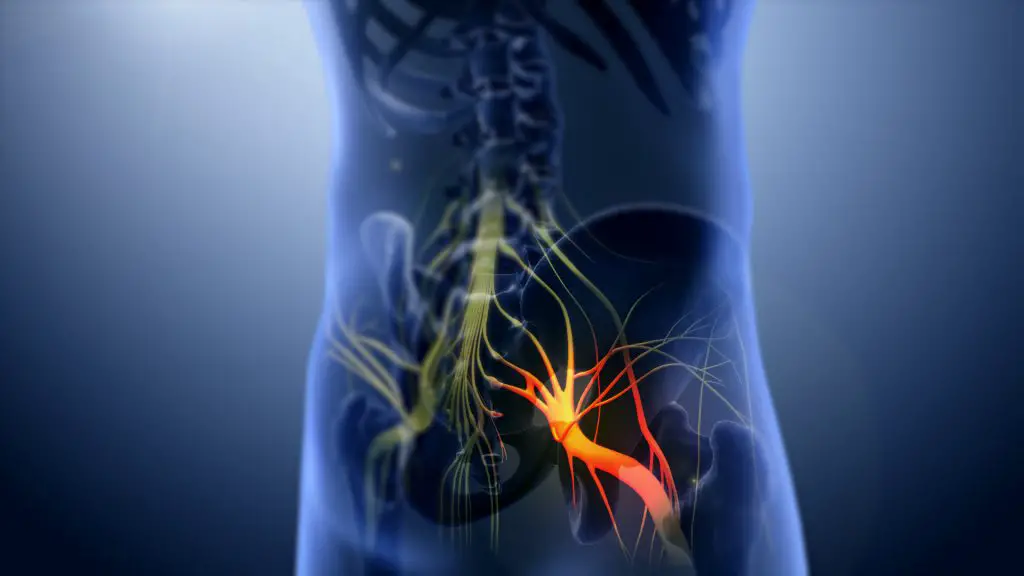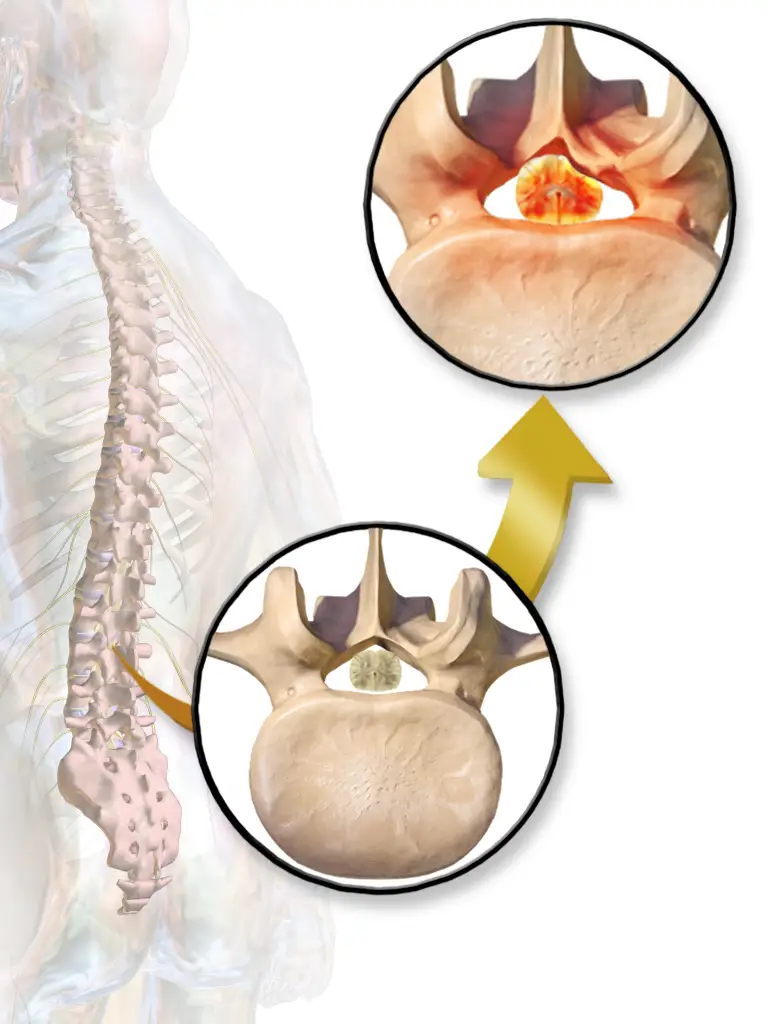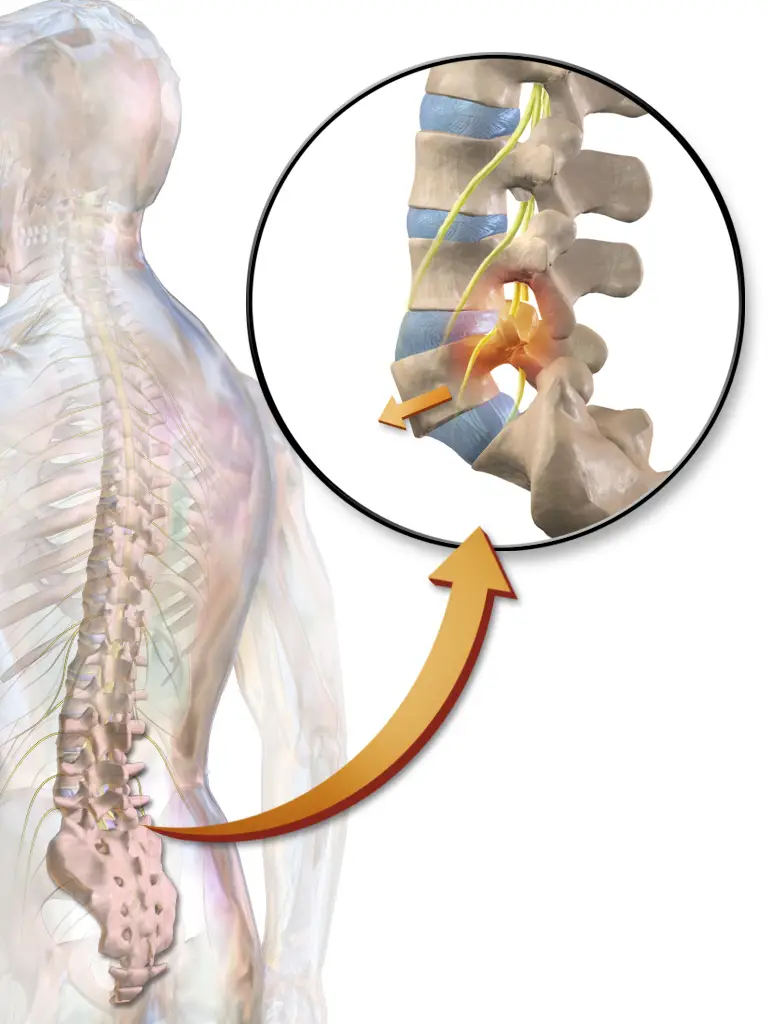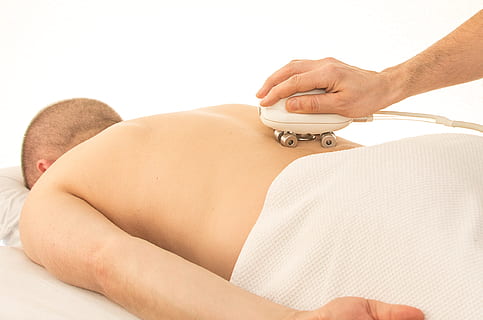How To Cure Sciatica Permanently? Here’s the Solution
There are many possible causes of sciatica, such as a herniated disc, bone Spur, spinal stenosis, or Piriformis Syndrome. Sciatica can also be caused by pregnancy or sitting for long periods of time.
Sciatica home remedies and self-care

Regardless of the cause, about 90% of people with sciatica will get better without surgery—most of them in just a few weeks. You can start treating your sciatica at home. In fact, home treatment may be all you need, especially if you know that your sciatica is caused by an injury or pregnancy.
Even if you don’t know what’s causing your sciatica, you can take steps to relieve your pain at home. Call your doctor if the pain isn’t manageable or under certain other circumstances.
Cold and heat
Both ice packs and heat can be used to ease the pain of sciatica and help you function better.
For the first seven days, use ice. Place ice packs on your lower back to reduce inflammation of the sciatic nerve. Be careful not to give yourself frostbite. Icepacks shouldn’t directly touch the skin; wrap them in a cloth or towel. Leave them in place for no more than 15 to 20 minutes at a time, with at least a 15- to 20-minute break in between. Try a cycle of on-off-on-off-on (this will take between 75 and 100 minutes). Then take a break to see how you feel.
Another way to apply cold to a painful area is an ice massage. Freeze water in a paper cup and then tear away the top half of the cup. Using a circular motion, massage the lower back with the ice. Cover an area about six inches in diameter, and keep the cup moving to prevent frostbite. Avoid the bony part of the spine. Massage for no more than 10 minutes and wait at least an hour between massages.
It’s okay to try some gentle stretches between ice applications, though better to wait about half an hour for the area to warm. Three to five applications per day may help relieve some of the pain.
Heat can be used after the first week, when some healing has taken place and the pain is subsiding. (If the pain has not subsided at all after a week, visit the doctor.) Heat treatments will increase the flow of blood to the area, which can speed healing. Heat also will relax the muscles to allow for gentle stretching that can help to relieve the pain.
You can use a hot water bottle or heating pad wrapped in a towel, or soak in a warm bath. If you use a water bottle or heating pad, apply it to your lower back. Improperly applied heat treatment can cause burns, so follow a few rules:
- Place a cloth barrier between the heat source and your body (if using a hot water bottle or heating pad).
- Make sure that the treatment feels warm, not hot; if it is uncomfortably warm, it’s too warm.
- Apply heat for at least 15 minutes, but no longer than two hours. The duration depends on your pain level.
- If using a heating pad, take care not to fall asleep while applying it.
Movement
Moving is probably the most important thing you can do to help your pain.
Many people with sciatica put themselves on bed rest, or lean back in an easy chair, thinking that this will help them to heal. It doesn’t!
It’s okay to rest for the first couple of days after sciatica pain starts; after that, staying in bed usually makes things worse, not better. Moving helps your pain in several ways:
- It strengthens your muscles, which helps to support your spine.
- It can improve flexibility and range of motion.
- It boosts blood flow to all areas of the body, including injured areas, which speeds healing.
- It reduces the perception of pain.
If you have sciatica, move as much as you can as soon as you can. If moving seems to make the pain worse, it’s best to see a doctor and talk through what’s going on.
Once your sciatica is under control, keep moving to decrease the likelihood that it will return. Sitting for long periods of time isn’t good for anyone. Extended sitting can increase your risk of sciatica and also can make sciatica worse once you have it.
To learn more about ways to ease your sciatica pain, purchase Finding Relief for Sciatica from Harvard Health Publishing.
Image: Richard Villalonundefined undefined/Getty Images
Share This Page Share this page to Facebook
Print This Page Click to Print
Disclaimer:
As a service to our readers, Harvard Health Publishing provides access to our library of archived content. Please note the date of last review or update on all articles.
No content on this site, regardless of date, should ever be used as a substitute for direct medical advice from your doctor or other qualified clinician.
How To Cure Sciatica Permanently? Here’s the Solution!
CLICK HERE TO LEARN MORE! Sciatica is a problem that can really put a damper on your day. If you’re dealing with sciatic pain, then you know just how frustrating it can be. But don’t worry, there is a solution!
- 1 What is Sciatica?
- 2 What Are the Common Sciatica Symptoms?
- 3 What Are the Causes of Sciatica?
- 3.1 Disc Degeneration
- 3.2 Lumbar Spinal Stenosis
- 3.3 Spondylolisthesis
What is Sciatica?
Sciatica is a medical condition characterized by pain going down the leg from the lower back. This pain may go down the back, outside, or front of the leg. Typically, sciatica affects only one side of the body.

The sciatic nerve is the longest nerve in the body. It runs from the lower back through the buttocks and down the back of each leg. The sciatic nerve is made up of many smaller nerves. It is about as wide as your little finger.
Sciatica can be caused by a number of things including:
- Herniated disc: A herniated disc occurs when pressure on the sciatic nerve from a disc causes local pain in the lower back followed by radiating pain.
- Degenerative disc disease: Degenerative disc disease is a condition that results in the deterioration of disks between vertebrae. Disks act as cushions for bones and protect them from rubbing together too much. When disks degenerate, they dry out and become thinner. This can put pressure on nerves and cause pain, numbness, or weakness.
- Lumbar spinal stenosis: Lumbar spinal stenosis is a condition in which there is a narrowing of the spinal canal in the lower back. This narrowing puts pressure on nerves and can cause pain, numbness, or weakness.
- Piriformis syndrome: Piriformis syndrome is a condition in which the piriformis muscle tightens and spasms, putting pressure on the sciatic nerve and causing pain, numbness, or weakness.
- Sacroiliac joint dysfunction: Sacroiliac joint dysfunction (SI joint dysfunction) occurs when there is too much or too little movement in joints between vertebrae in your spine and pelvis (sacroiliac joints). SI joint dysfunction can cause inflammation and pain near where your sciatic nerve runs.
What Are the Common Sciatica Symptoms?
The sciatic nerve is the longest nerve in your body. It runs from your lower back all the way down your leg. Sciatic nerve pain (also called sciatica) is a common type of pain that happens when this nerve becomes irritated or compressed.
There are many possible causes of sciatica, such as a herniated disc, bone Spur, spinal stenosis, or Piriformis Syndrome. Sciatica can also be caused by pregnancy or sitting for long periods of time.
Symptoms of sciatica can include:
- Pain in your lower back, buttocks, or legs that gets worse when you sit down
- A shooting pain that runs down your leg
- Weakness, numbness, or tingling sensations in your leg
- Burning or tingling sensations in your leg
- Electric shock-like pain in your leg
- Pain that gets worse at night or when you sneeze, cough, or moves around too much
If you have any of these symptoms, it’s important to see a doctor so they can diagnose the cause of your pain and create a customized treatment plan for you.
What Are the Causes of Sciatica?
The sciatic nerve is the largest nerve in the body, running from the lower back through the buttocks and down the legs. sciatic nerve pain can be caused by a variety of factors but is most commonly caused by a herniated disc or spinal stenosis. In many cases, sciatica can be cured permanently with a combination of physical therapy, stretching, and exercises.
There are many possible causes of sciatica, but the most common cause is a herniated disc. A herniated disc occurs when the jelly-like center of the disc ruptures, putting pressure on the sciatic nerve and causing pain. Other common causes of sciatica include spinal stenosis (narrowing of the spine), degenerative disc disease (breakdown of discs), and pregnancy.
Sciatica can cause a variety of symptoms, including low back pain, hip pain, buttock pain, leg pain, and weakness or numbness in the legs. The most common symptom is shooting pain that radiates down the leg. Other common symptoms include tingling or burning sensations in the leg and muscle weakness.
Most people with sciatica can be treated conservatively with physical therapy, stretching exercises, and over-the-counter analgesics. However, some people may require surgery to alleviate their symptoms. If you have any of the above-mentioned symptoms or if conservative treatment does not relieve your pain, you should see a doctor for evaluation.
Disc Degeneration
The spine is made up of bones called vertebrae that are separated by intervertebral discs. These discs act as shock absorbers and allow the spine to move freely. Disc degeneration is a process that occurs over time and can lead to a number of problems, including herniated discs, sciatica, and degenerative disc disease.

Disc degeneration is caused by a variety of factors, including aging, injury, and repetitive motion. When the discs begin to break down, they lose fluid and become less able to cushion the spine. This can lead to pain, numbness, and weakness in the arms or legs. In severe cases, it can cause paralysis.
There are a number of treatments for disc degeneration, including rest, ice, heat, physical therapy, and surgery. If you are experiencing pain or other symptoms associated with this condition, be sure to see your doctor for an accurate diagnosis and treatment plan.
Lumbar Spinal Stenosis
Lumbar spinal stenosis is a condition that affects the spine and the sciatic nerve. The sciatic nerve is the longest and widest nerve in the human body, running from the lower back down each leg. In many cases, sciatic nerve pain is caused by a herniated disc or disc degeneration in the lumbar spine. As we age, the discs in our spine begin to break down, and this can cause the spinal canal to narrow, putting pressure on the nerves. This condition is called spinal stenosis, and it can be very painful.

There are several common sciatica symptoms, including pain that radiates from the lower back down the leg, numbness or tingling in the leg, and weakness in the leg. These symptoms can make it difficult to walk or stand for long periods of time. If you are experiencing any of these symptoms, it’s important to see a doctor for an evaluation. They will likely order an MRI to confirm the diagnosis of lumbar spinal stenosis.
Treatment for lumbar spinal stenosis typically involves pain relief and physical therapy. In some cases, surgery may be necessary to decompress the nerves. If you are experiencing sciatic nerve pain, talk to your doctor about your treatment options.
Spondylolisthesis
Spondylolisthesis is a condition in which one of the vertebrae slides forward over the one below it. It’s usually caused by a stress fracture or arthritis in the lower back. Treatment options include rest, oral medication, and physical therapy. In some cases, surgery may be necessary.

The most common symptom of spondylolisthesis is lower back pain. This may be accompanied by spinal instability, sciatic nerve pain, and difficulty walking or standing for long periods of time. The degree of symptoms depends on the severity of the condition.
Spondylolisthesis is diagnosed through a combination of medical history, physical examination, and imaging tests such as X-rays, computed tomography (CT) scans, and magnetic resonance imaging (MRI). Treatment is aimed at relieving pain and restoring function. It is important to consult with a spine specialist to determine the best course of treatment.
How to Cure Sciatica Without Surgery
If you are looking for sustainable sciatica relief, then you have come to the right place! Whether you are suffering from lumbar spinal stenosis, sciatic nerve pain, or degenerative disc disease, we have an approach that can help.
One of the main advantages of our chiropractic-centered treatment is that it is designed to correct the underlying cause of your sciatica. This means that our treatments can provide you with long-term relief, rather than just masking the symptoms.
Another advantage of our approach is that it is non-invasive and does not require surgery. This means that there is no risk of permanent nerve damage or other side effects associated with traditional treatments.
Can Chiropractic Care Help?
The vertebral subluxation complex is a dynamic process involving the vertebrae, disc, and soft tissues of the spine. When one or more vertebrae become misaligned and fixated, they can put pressure on adjacent vertebrae, discs, and nerves. This can lead to pain, inflammation, and other problems.
Chiropractic care is a safe and effective way to treat the vertebral subluxation complex. Chiropractors use precise adjustments to realign the spine and relieve pressure on affected vertebrae, discs, and nerves. This can help to reduce pain and improve function.

There is evidence to suggest that chiropractic care may be particularly effective for treating sciatica. One study found that condition-specific chiropractic care was more effective than general medical care for treating sciatica. The study found that those who received chiropractic care had greater improvements in pain, disability, and quality of life than those who received medical care.
Another study found that chiropractic adjustments were more effective than injections for treating sciatica. The study found that those who received chiropractic adjustments had better outcomes in terms of pain relief, functional improvement, and quality of life than those who received injections.
If you are suffering from sciatica, chiropractic care may be able to help. Be sure to consult with a licensed chiropractor to see if this type of care is right for you.
What About Physical Therapy?
If you’re looking for a permanent solution to your sciatic nerve pain, physical therapy may be the answer. However, there are a few things you should know before starting physical therapy exercises.
First, it’s important to understand that your sciatic nerve pain is likely being caused by an issue with your lumbar spine. This means that the focus of your physical therapy exercises should be on improving the function of your spine and correcting any muscle imbalances that may be causing your pain.

Second, you’ll need to find a physical therapist who specializes in treating sciatic nerve pain. They will be able to prescribe the best exercises for your specific condition.
Finally, don’t expect immediate results from your physical therapy exercises. It may take several weeks or months of consistent exercise before you see a significant improvement in your symptoms. Stick with it, and you’ll eventually find relief from your sciatic nerve pain!
Can Inversion Therapy Help Sciatica?
One of the most common questions we get from patients is whether or not inversion therapy can help heal their sciatica.
The answer is: YES!
Inversion therapy involves hanging upside down, or at an inverted angle, to stretch the spine and take pressure off the nerves. Proponents say that it can improve back pain, relieve pressure on the sciatic nerve, and reduce inflammation.
A 2014 study found that inversion therapy may be helpful for people with chronic low back pain, but more research is needed to confirm these results.
If you’re interested in trying inversion therapy, talk to your doctor or physical therapist first. They can help you choose the right type of inversion table and make sure you know how to use it safely.
There are many different kinds of inversion tables on the market, so it’s important to do your research before you buy one. Look for a table that’s easy to set up and use, has safety straps to keep you secure, and has cushioned backrests for comfort. Some also come with water bottle holders and other features that can make your sessions more comfortable.
Inversion therapy is generally considered safe, but there are some possible side effects, including high blood pressure and inner ear problems. If you have any health conditions or take medication, talk to your doctor before you try inversion therapy, as there may be interactions between the two.
Conclusion
We hope that this article has provided you with some relief from your sciatic nerve pain. If you are still experiencing pain, we recommend seeking out a scoliosis reduction center or a physical therapist that can create a customized treatment plan for you. Sciatic nerve pain is often the result of unhealthy movement patterns and imbalances in the body. By correcting these imbalances and retraining your body to move correctly, you can find lasting relief from your sciatica.
In addition to physical therapy, there are a number of other nonsurgical treatment disciplines that can be invaluable in treating sciatica. Chiropractic care, acupuncture, and inversion therapy are all excellent options that can provide relief from sciatic nerve pain. Inversion tables are a popular option for inversion therapy and can be easily found online or at most sporting goods stores.
If you’re looking for lasting relief from your sciatica, we recommend seeking out a scoliosis reduction center or a physical therapist that can create a customized treatment plan for you. With the help of these professionals, you can find relief from your sciatic nerve pain and get back to living your life free of pain. We also recommend you learn more about the Teeter® inversion tables and how they may help with sciatica.






